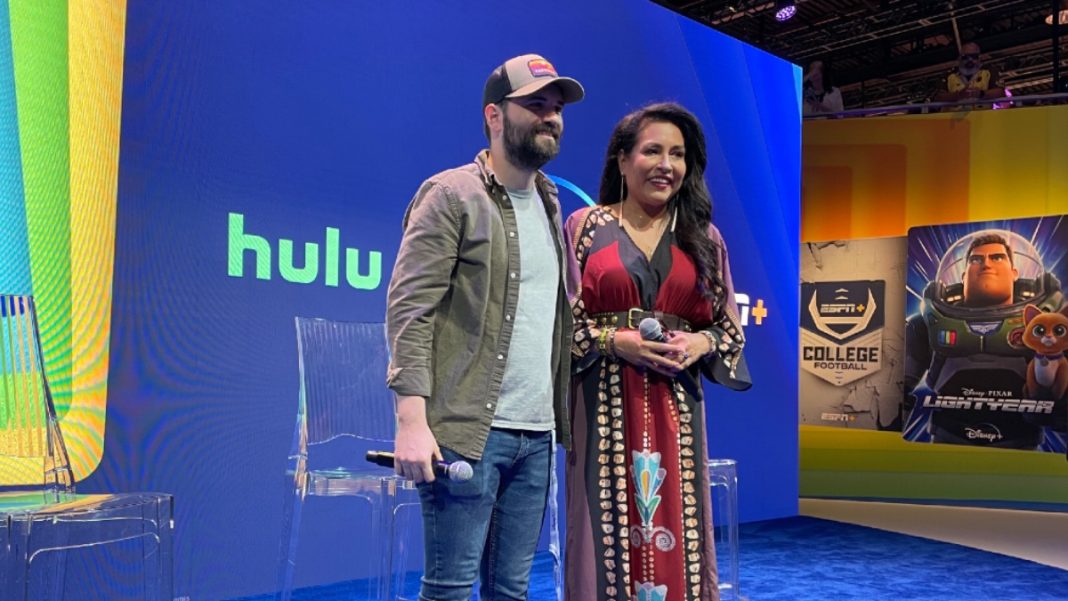Over the weekend of September 9 through 11, 2022, Disney+, Hulu, and ESPN+ returned to D23 Expo: The Ultimate Fan Experience to showcase their streaming lineup at the Disney Bundle Pavilion Stage. More than once, I stopped by the Pavilion Stage to see what the heck was happening because: (a) it was fun to chat with the Bundle team, (b) there were drag queens and dance parties galore, and (c) and there were some great panels that didn’t involve waiting in an epic line (and that no other outlet covered, at least I don’t think, like Prey).
But the Pavilion Stage highlight was a 30-minute program titled, “Prey: A Conversation with Producer Jhane Myers & Director Dan Trachtenberg,” about the making of the prequel film to the incredibly iconic Predator franchise. The program celebrated the success of the Hulu original movie Prey from 20th Century Studios with producer Jhane Myers and director Dan Trachtenberg, who also shared the importance of Native representation in media.
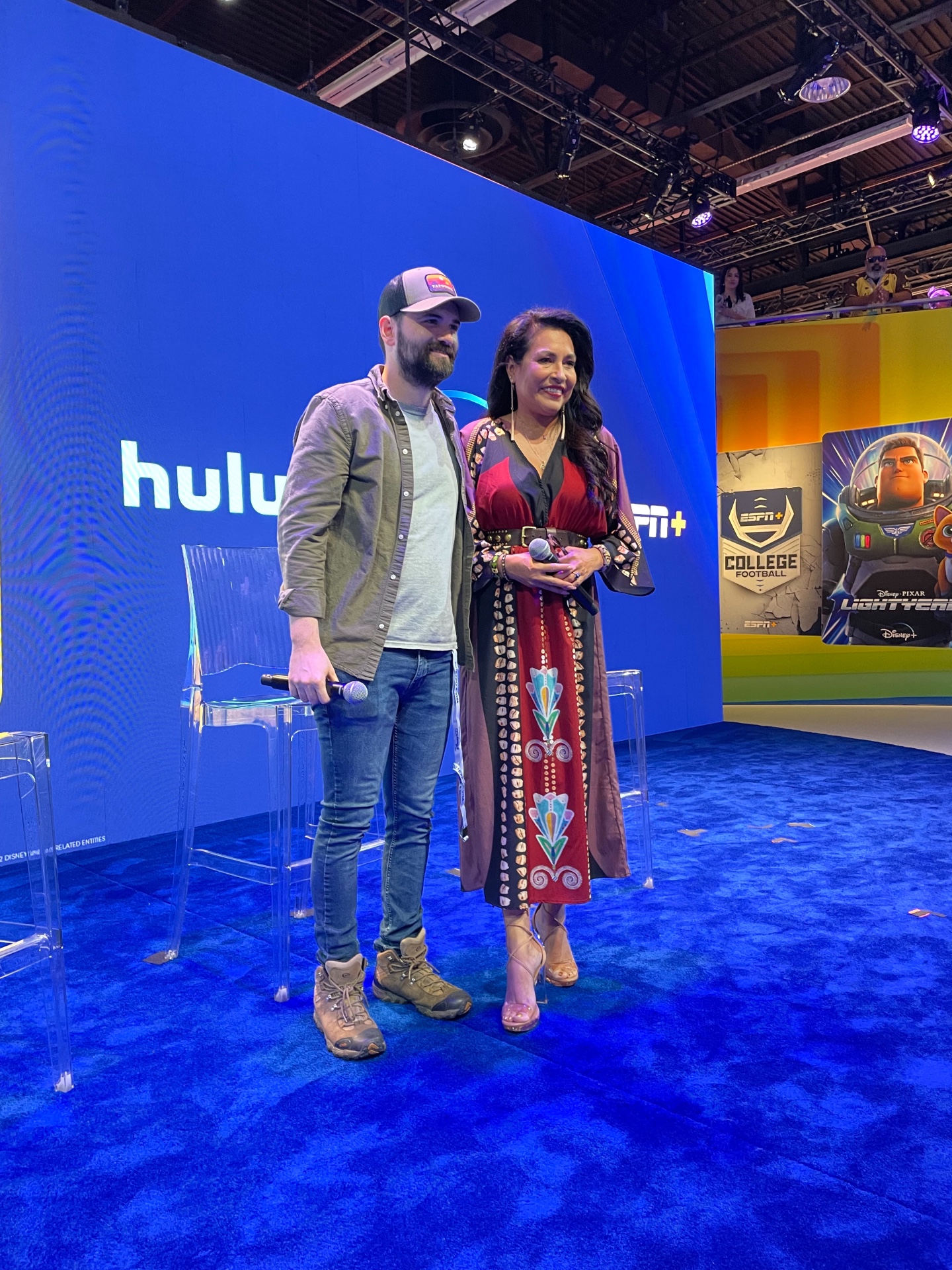
When Prey premiered on August 5, 2022, it became Hulu’s No. 1 most-watched premiere ever, across film and television. (It’s obvious why, as the film is clearly the best in the franchise. BOOM, that was my mini-review.) Set in 1719 and featuring a predominantly Indigenous cast of first-time actors, Prey takes place almost 300 years before the events of 1987’s Predator and tells the tale of the very first alien encounter. This time around, instead of threatening an array of macho action stars like Arnold Schwarzenegger‘s Dutch, the focus is on a teenage aspiring warrior Naru, played by Amber Midthunder, who leads the fight against the high-tech Predator.
Prey vs. Predator
Trachtenberg talked about setting Prey apart from the rest of the Predator franchise, while still paying homage to the 1982 original. “We wanted to very much embrace the cool of the original movie,” Trachtenberg said, later adding that he aimed to recapture the feeling that audiences had when they first experienced the original film by making an adventure film combined with a historical epic combined with thrills, suspense, and horror.
“I really wanted to recapture the feeling that we all had when watching the original movie,” the Prey director told the audience. “When I watched the original Predator, I remember seeing it cloaked and thinking, ‘Oh, cool; that’s the Predator.’ And then it decloaks, and you see it with its bio mask, and it’s like, ‘Oh, that’s the Predator.’ Then at the end of the movie, it removes the bio mask and you go, ‘No, that’s the Predator,’ and that’s why that design made such a massive impression on all of us.”
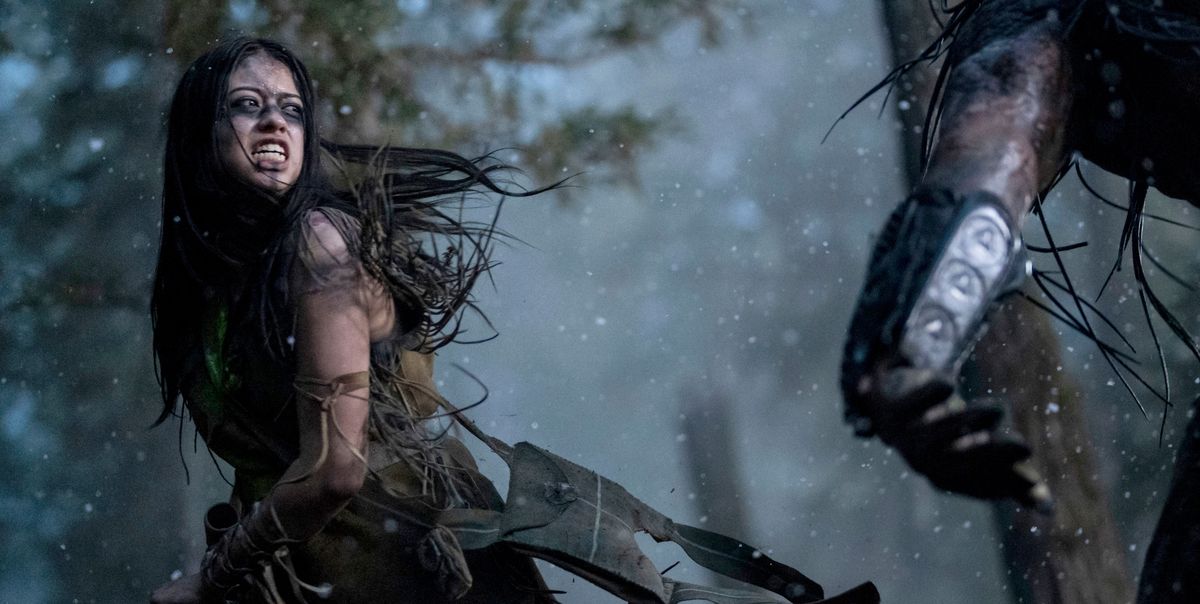
Trachtenberg added that he also got inspiration from an unlikely source: the sports movie.
“I thought if we could take the engine of a sports movie, an underdog story, and inject that into a genre movie, then we could really be firing on all cylinders. And in thinking about that underdog story, we thought about what’s the protagonist that we never see in movies, and unfortunately, Native Americans and Comanche, in particular, are so often relegated to playing the sidekick or the villain and never the hero. So it was thinking about all of those things, that this movie came together.”
By telling the underdog story, Prey was able to explore more relatable themes than the original film and the subsequent sequels, especially to today’s moviegoing audience who wants stories that are relevant to our society and social dynamics. “Arnold Schwarzenegger very much represents the wish fulfillment, and the person that we all wished we could maybe be, but Naru, the main character of this movie, very much represents the way that we all actually feel and want to be in reality, so seeing her try to overcome what she’s up against is more aspirational,” said Trachtenberg during the D23 presentation.
“I think everyone can relate to being doubted and doubting yourself and feeling like you think you’re capable of doing something and feeling like you should be able to do it but you’re not quite sure. Then even more so, there are a lot of people that live here, the first people that lived here, that have never really had a model or a reference point for someone like Naru. So making sure that that was something that we were taking very seriously was, of course, a huge part of it.”
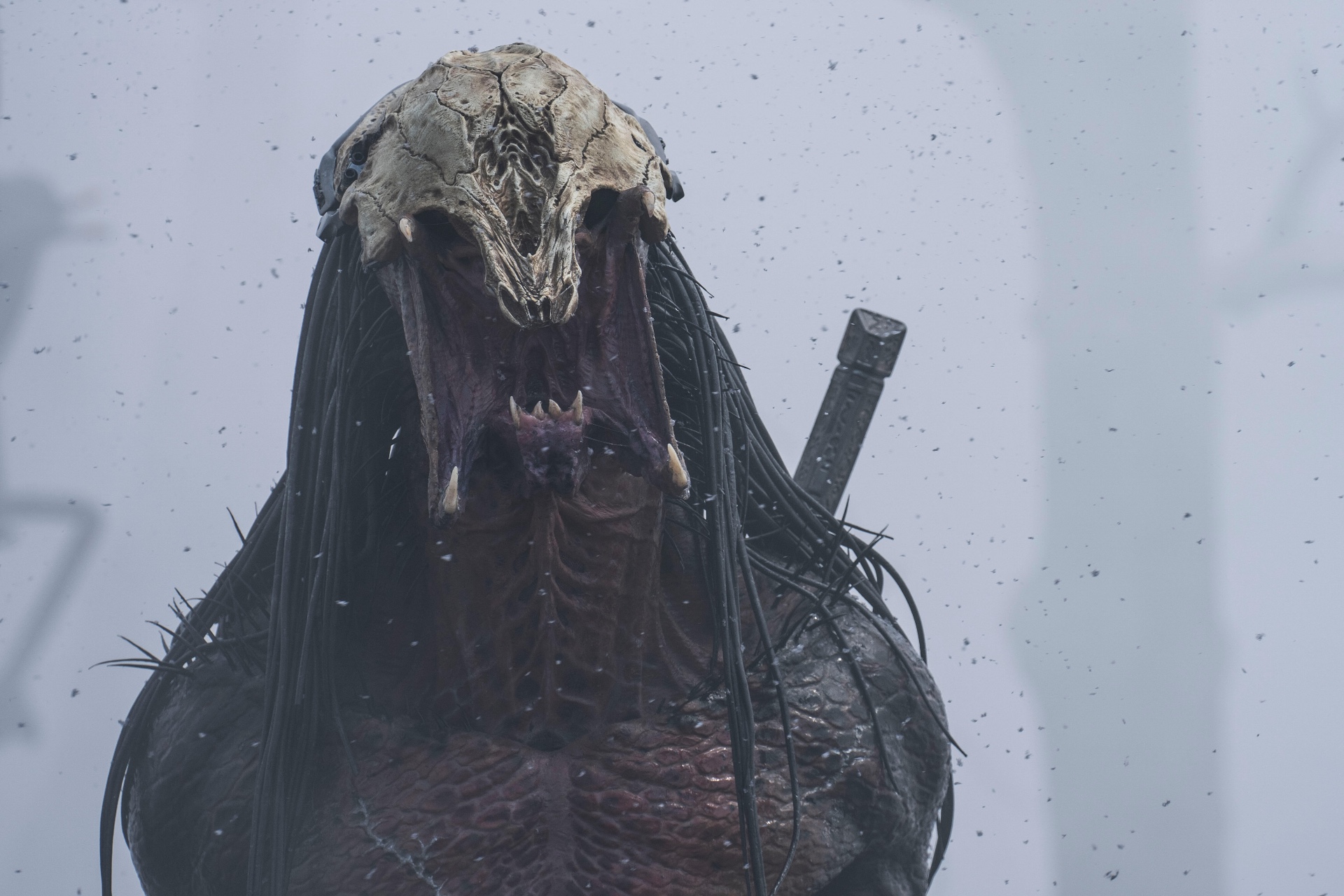
By setting the film in the past, it also allowed Trachtenberg to update (or should I say backdate?) Predator’s design, and he added that also added to the audience experience. “To this day, none of the other Predator movies have really been able to function [like the original],” said the director. “So for me, the exciting thing was setting Predator back 300 years and thinking of it more like a cousin of the creature we’ve seen, a creature from a different hemisphere of the same planet, so that people could be surprised when they see it decloak in this movie… Then, I thought that it would be cool to make it a little nastier.”
Prey Cast Bootcamp
With every action scene in Prey feeling so purposeful and the inspiring intensity of Midthunder’s performance, it was hardly a surprise to learn that the Prey cast participated in a six-week BootCamp where they rehearsed movement.
Many of the actors who played members of the band had never been on a movie set, including acting newcomer Dakota Beavers, who played Taabe, Naru’s brother and a skilled hunter, who actually learned how to ride a horse at BootCamp. “He did all of his stunts and his fighting, and he’s never been in a movie,” said Trachtenberg. “Not only has he never been in a movie, but he’s also never been on the radio or a commercial or anything, he was working at T.J. Maxx the day before he came to me.”
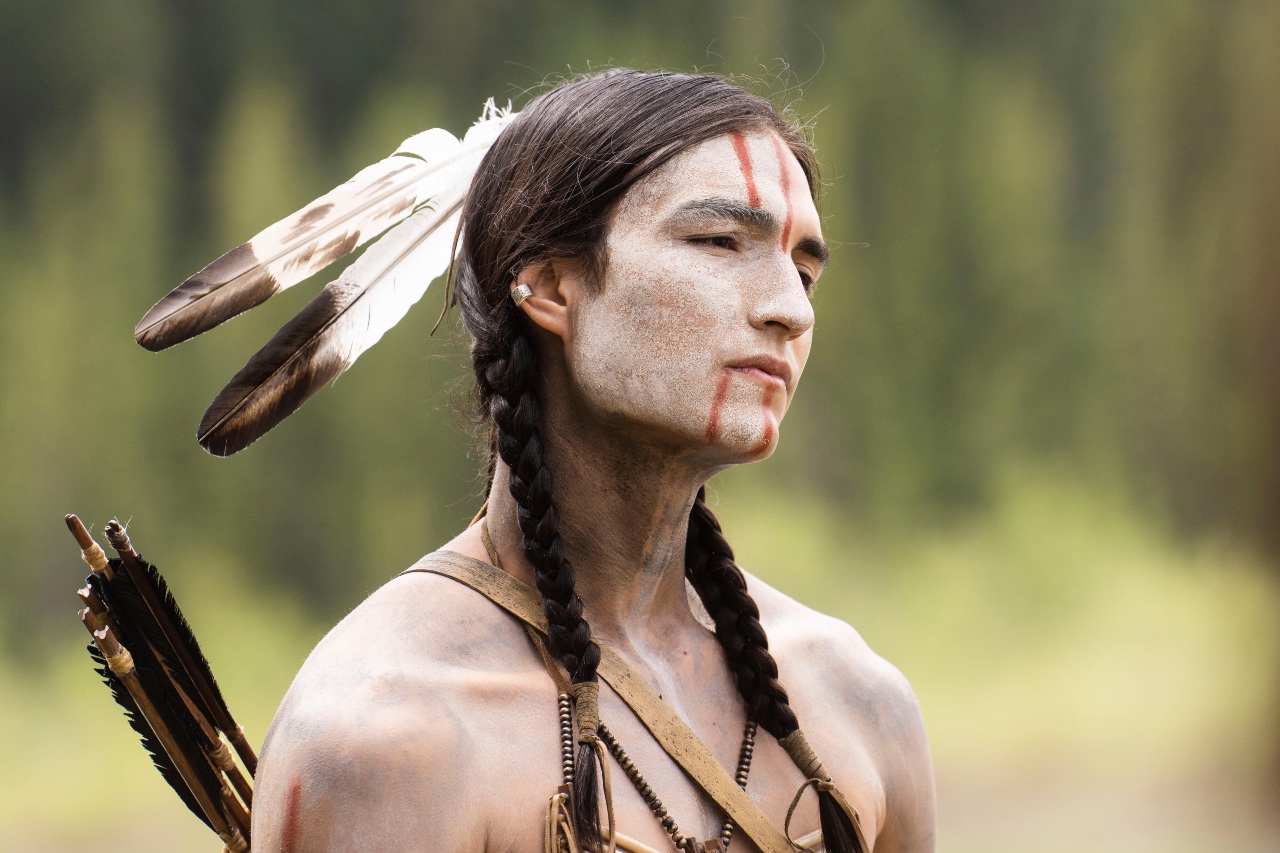
“All of the guys, and Amber, spent a lot of time bonding and understanding the way that they may have hunted and working with all their weaponry,” said Trachtenberg. Prey does not follow a whole Comanche tribe, but a band of Comanches on a hunting trip, storing up food and supplies for winter. Because of this, Myers added that the cast BootCamp was especially important “because if they were in a band, then they were people that grew up together. It’s like family people, and they all know each other. It was getting [the cast] to feel like that.”
Later on in the presentation, Myers added that the Prey cast had a unique way of getting to know each other better, “What Dan doesn’t realize is that we had a really playful cast, everybody was 24 and under, and so for us, as Native people, we had this game, we were hunting each other.”
She continued, “We tried not to do it in front of him because we thought we’d get in trouble, but we would all hunt each other and kill each other. It was great because I was going for the championship but I was able to kill everybody except for Amber; I was never able to kill Amber. It was fun, and in between things, it kind of kept everybody in that headspace too, that this was a Predator movie and that they would eventually be hunted and probably killed.”
Comanche Representation
According to Myers, who is Comanche, it was “like a dream” to see an authentic portrayal of Comanche people onscreen. “I’m a Comanche culturist,” said Myers, who regularly works in Native film and fine arts, “so this has been my whole life.”
As a Comanche culturist, Myers discussed the research that is involved in accurately depicting the Comanche life in the 1700s, which was multifaceted. First, since the Prey producer is also a traditional artist, she researched and contributed to some of the film’s costume designs. “I was able to make a lot of the garments but also to teach our different departments,” said Myers. “I think it just brought a really great understanding because the creatives just absorbed it like a sponge.”
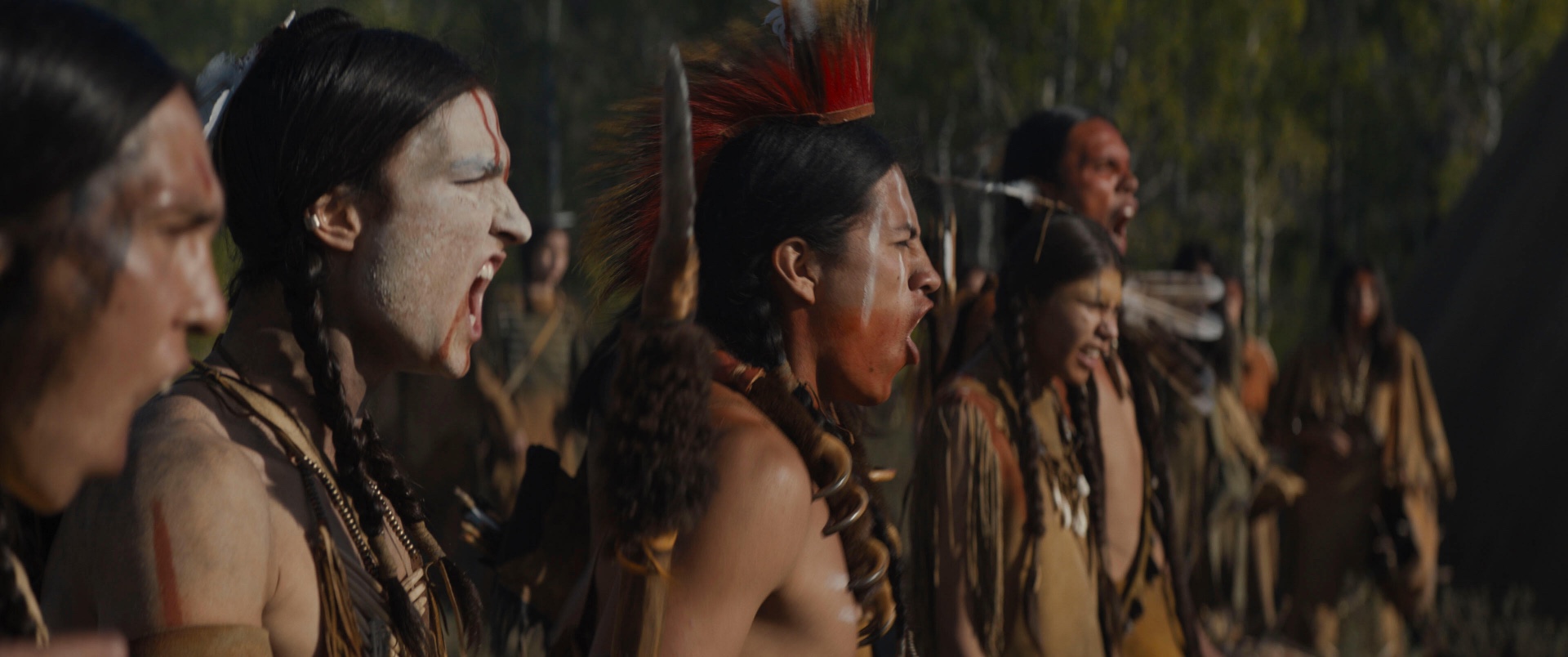
“The movie has a very special nature with language,” Trachtenberg added, referring to the use of Comanche, both in terms of nonverbal communication and spoken language.
“We did a sign language that was based on Comanche sign language,” said Myers. “It was developed so they could talk to each other without actually having to speak words.”
Myers attributed the film’s authenticity to having representation both behind-the-scenes and in front of the camera. “I think it’s really important when you have representation because you would need to have people behind the camera, not just in front of the camera,” said Myers.
She continued, “When you have people like myself that are producers, or Sterlin Harjo, a director and showrunner, Taika Waititi, an executive producer, we have a huge index of people that this industry hasn’t seen. I think that what Prey does is it really pushes on the Hollywood paradigm because we had so many people—we had an internship program on our film—so we had people in every department who were Native. So you can see what authentic representation is because it goes throughout the whole film, even into the end credit sequence. We had Native fine artists create all those amazing things. So I think that this sets the bar high. I think that we did a lot of first things that you haven’t seen in films before. Dan was just ready. You know, I’d say, ‘Oh, what about this? What about that?’ He really just absorbed everything, and we can see how that made this film.”
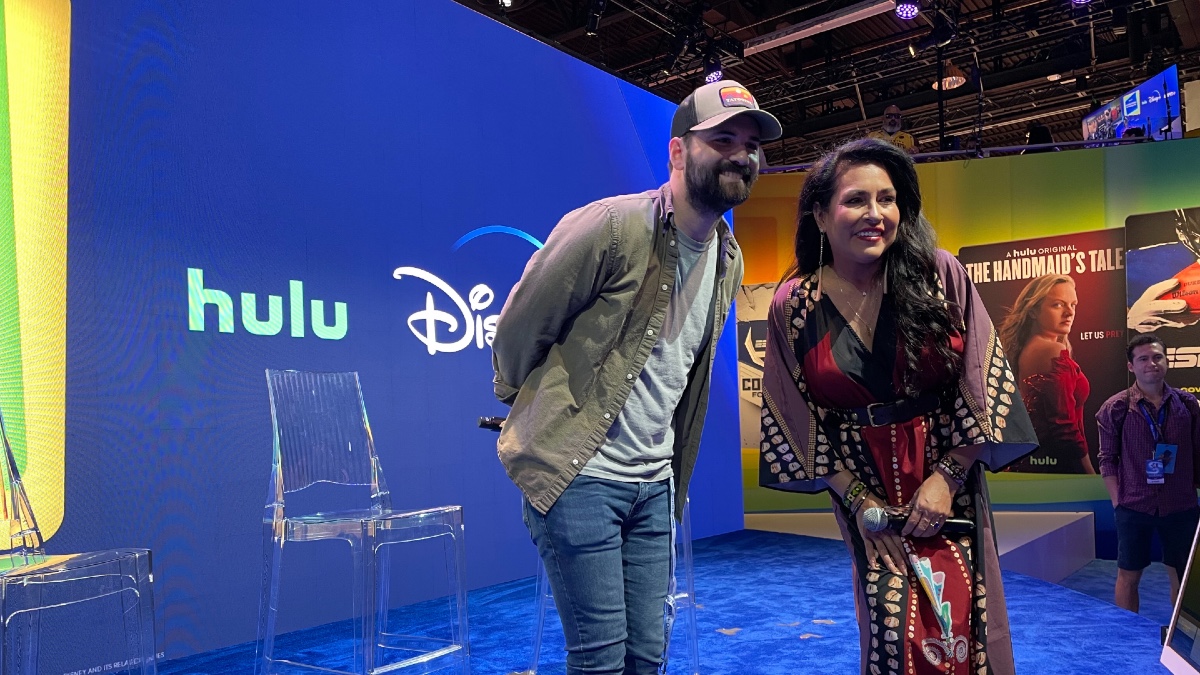
In addition to the behind-the-scenes representation, Hulu simultaneously released Prey in a Comanche dub – which, in case you don’t know, is a big deal. “There has never been a movie, not even a short film, in our language,” Myers commented. “In fact, there has been never been a full feature released at the time of release in any Native language. It was a challenge to get it done within the time period because we had a due date to turn it in at Hulu, but we rose to the challenge. When you have this kind of opportunity—and it’s all about representation and creating an authentic masterpiece—then you get it done.”
The panel closed out by talking about Prey‘s cultural impact, and how Myers hopes the film will change entertainment as a whole, with Trachtenberg concluding by saying, “[Prey] proves that you can make anything beautiful, like even this deeply, aggressive, gory, violent movie has some poetry to it, and it’s a very inspirational people story. That’s what I’m the proudest of, and I hope to continue to help more not just see, look, make, or watch movies for fun — it can be fun and meaningful, as well.”


